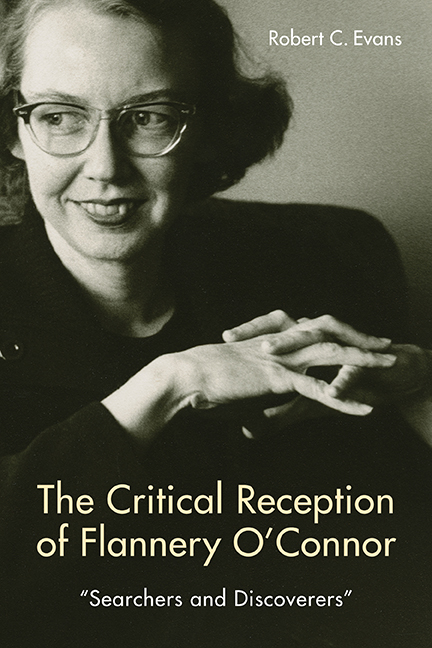Book contents
- Frontmatter
- Dedication
- Epigraph
- Contents
- Acknowledgments
- Introduction
- 1 Aesthetics: Style, Form, Themes, and Characterization
- 2 Religion: Christianity and Catholicism
- 3 History and Historical Contexts
- 4 The South: Heritage and Change
- 5 Race: Blacks and Whites
- 6 Gender: Women and Men
- Conclusion: O'Connor Criticism: What Now? What Next?
- Works Cited
- Index
5 - Race: Blacks and Whites
Published online by Cambridge University Press: 15 August 2018
- Frontmatter
- Dedication
- Epigraph
- Contents
- Acknowledgments
- Introduction
- 1 Aesthetics: Style, Form, Themes, and Characterization
- 2 Religion: Christianity and Catholicism
- 3 History and Historical Contexts
- 4 The South: Heritage and Change
- 5 Race: Blacks and Whites
- 6 Gender: Women and Men
- Conclusion: O'Connor Criticism: What Now? What Next?
- Works Cited
- Index
Summary
ISSUES OF RACE and of race relations have long been important in commentary on Flannery O'Connor but have become especially significant in recent years. After all, O'Connor lived in a section of the United States with the highest proportion of African Americans. Blacks had suffered much misery there, first as slaves and then, often, as poor and downtrodden persons subject to legal discrimination. It might have been tempting for O'Connor, as a relatively powerful white woman, to ignore racial matters and write mainly about her fellow whites. And indeed, some critics have claimed that this is essentially what she did. They argue that blacks in her fiction are mainly background characters, that O'Connor never created a major black figure or really tried to “get inside the heads” of black people. O'Connor herself claimed that she wrote most effectively about the people she knew best, conceding that she knew little about African Americans in any intimate ways. Yet her works repeatedly explore racial issues, often in ways suggesting sympathy for blacks, support for gradual integration, and, especially, contempt for deep-seated racism.
O'Connor herself, however, has sometimes been accused of racist views. The N-word appears repeatedly in her fiction, making some of her works increasingly difficult to teach or read. Usually the word reflects the real speech of her era; avoiding it might have opened her to charges of whitewashing the uglier aspects of contemporary culture. In fact, sometimes O'Connor uses the word (especially, for instance, in “Revelation”) to mock and satirize blatant racism. Her black characters, although few in number and never central, are rarely treated with the comic disdain O'Connor reserves for racist whites. She saw deep racism as one more symptom of the pride and self-centeredness that she, as a devout Christian, considered humanity's greatest flaw. For her, racism both reflected and resulted from original sin. It would be easy to show how often she satirized racism and racists.
Yet some commentators think O'Connor did not go far enough in championing equal rights for blacks. Some have even accused O'Connor herself of racism, especially in view of various remarks she made in published— and especially some unpublished—letters. Defenders suggest that such remarks were meant to shock or mock the sensibilities of pious liberals, including some of her closest friends.
- Type
- Chapter
- Information
- The Critical Reception of Flannery O'Connor, 1952–2017“Searchers and Discoverers”, pp. 188 - 211Publisher: Boydell & BrewerPrint publication year: 2018

